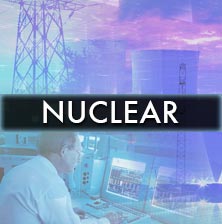The following is a small selection of items recently published by EPRI. To view complete lists of your company-funded research reports, updates, software, training announcements, and other program deliverables, log in at www.epri.com and go to Program Cockpits.

EPRI’s Efficient Electrification Initiative is analyzing electrification’s costs and benefits to electricity consumers, utilities, and society; developing and demonstrating advanced electric technologies; supporting implementation of comprehensive electrification strategies; and informing industry stakeholders. This is the initiative’s monthly newsletter.

This report discusses the strengths and limitations of a September 2017 paper in Cancer Causes & Control entitled “Residential Magnetic Fields Exposure and Childhood Leukemia: A Population-Based Case-Control Study in California.”

To help meet wastewater discharge limits, coal-fired power plants are increasingly considering the use of volume reduction technologies. In this study, EPRI evaluated the characteristics, performance, and operability of several volume reduction technologies.

At Georgia Power’s Plant Bowen, EPRI tested four continuous emissions monitoring systems for sulfuric acid in flue gas. This report discusses the results.

EPRI’s Efficient Electrification Initiative is analyzing electrification’s costs and benefits to electricity consumers, utilities, and society; developing and demonstrating advanced electric technologies; supporting implementation of comprehensive electrification strategies; and informing industry stakeholders. This report describes the objectives, plans, and research.

Electricity-related technology and service offerings to customers have expanded in the past decade, with potential implications for customer load. Utilities need to understand and predict what their customers are likely to adopt so that they may plan for grid support accordingly. This report reviews methods for modeling customer preferences across three disciplines: economics, psychology, and sociology.

This research examined potential effects of power plant thermal effluents on fish communities in the Ohio River. It consisted of adult and juvenile fish surveys, habitat evaluations, and water quality studies upstream and downstream of seven power plants spanning nearly 900 river miles.

This report examines the biological effects of HVDC transmission lines, including those related to exposure to air ions and aerosols and exposure to static electric and magnetic fields.

This study lab-tested a new online method for monitoring the health of multiple motors using only aggregate current measurements. The approach could significantly lower the cost of machinery monitoring in power plants.

This report discusses the state of the art in groundwater extraction and treatment (commonly known as “pump and treat” technology) for remedial action at coal combustion residual facilities. A summary of alternatives for management and treatment of extracted groundwater is also provided.

This report is a guide for evaluating whether days with high ozone concentrations qualify as exceptional events (unusual or naturally occurring events that can affect air quality but are not reasonably controllable using techniques implemented by state or local air agencies). It provides an overview of the U.S. Environmental Protection Agency’s guidance on exceptional events, data resources for exceptional event analysis, screening steps for ozone exceptional events, and three case studies.

This software analyzes fuel behavior in light water reactors during normal operation or an accident.